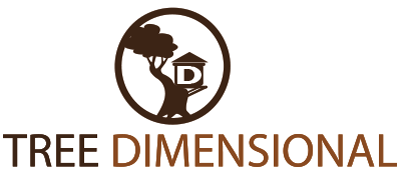During the Design phase the course and business begin to come to life. Beginning with a site visit, the design phase often includes tree and property surveys, the development of three-dimension renderings and CAD drawings, and project mapping.
The goals of the design phase are to:
- Solidify business goals and objectives
- Formalize the scope of the project in terms of design, business relations, training, and ongoing support
- Determine what local or regional resources are available to assist (if necessary).
- Create a project timeline.
Overview
It is key to understand the importance of the Design phase. It is here that successful programs and businesses are created. Proper design processes not only ensure that our clients get the best product, it allows time for visions to be crafted and vetted before work begins and serves to overt costly changes that might otherwise be requested later.
The Design phase is much more than an opportunity to draw out a course or treetop structure. During this time, our experience as designers, trainers, and challenge course program managers is applied to ensure that all aspects of the business are sound. While surveys and drawings are being completed, it is equally important that other business processes are underway, including the development of internal systems (staffing, reservations, financial, legal, marketing), physical plant, and infrastructure.
Depending on the scope of the project, beit it a straight purchase, financing, or other partnership, the end of the Design phase is marked by the signing of formal agreements, time frames, and a project cost.
The Design phase is generally conducted as a separate visit from the Site Feasibility Report conducted during the Discovery phase. Clients can expect the design visit to take four to ten days on-site for small projects and two to three weeks on-site for highly complicated courses where towers and other structures need to be installed. Additional time is often required in the office to complete drawings. While design is an ongoing process, the Design phase generally takes several weeks depending on permitting, degree of engineering required, jurisdictional requirements and complexity of structures to be installed.
